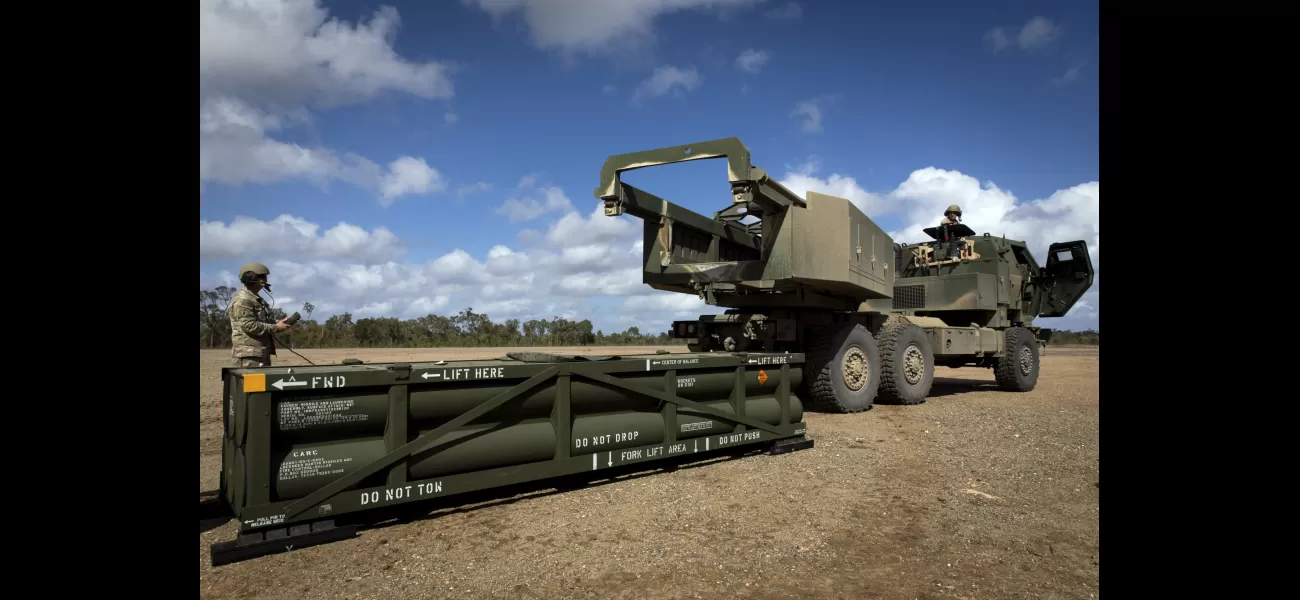Putin warns the West about the danger of their $2 million Tomahawk missiles.
Russia labeled it an aggressive action.
July 11th 2024.

The tensions between nations are escalating as threats and counter-threats are being exchanged over the issue of missiles. Russian President Vladimir Putin has made it clear that he will not back down from a potential military response, after the US announced their plans to position long-range missiles closer to Russia's borders in Europe. These missiles, including the Tomahawk cruise missiles, hypersonic weapons, and Standard Missile-6, are set to be deployed in Germany and will give NATO members an advantage in defending against Russia's aggressive actions in Ukraine.
The White House has confirmed that these weapons will not be deployed until 2026, but it is seen as a strong statement of their commitment to the defense of NATO and Europe. However, this move has not been welcomed by Russia, with Deputy Foreign Minister Sergei Ryabkov calling it an "escalatory move" aimed at intimidating their government. He also stated that Russia will not back down and will respond with a "military response" to this new game.
But what do we know about these US-supplied missiles? Let's take a closer look. The Tomahawk cruise missile is a long-range weapon used by the US Navy for land-attack operations. It has an incredible accuracy of about 16 feet and uses satellite-assisted navigation and radar to reach its target up to 1,500 miles away. It can carry either a conventional or nuclear warhead, with each missile costing around $2 million. This information is based on data from the US Marine Corps in 2022.
While Russia and China may be ahead in the development of hypersonic weapons, the US has also made progress in this area, conducting tests recently. Hypersonic weapons can fly at a speed of 4,000 miles per hour, making them difficult to detect and intercept in time. They also have the ability to maneuver, making them even more challenging to defend against.
The Standard Missile-6, on the other hand, is a versatile weapon used by the US Navy for anti-air, anti-surface, and ballistic missile defense missions. Its unique "three missiles in one" design makes it a valuable asset for the US military. These missile deployments come just weeks after Putin announced that Russia would resume production of intermediate and shorter-range nuclear-capable missiles, in response to the US bringing similar weapons to Europe and Asia.
The announcement of these deployments was made during the ongoing NATO summit in Washington. It seems that the pressure from the alliance may be getting to Putin, as member countries have committed to strengthening Ukraine's defenses. The US, the Netherlands, and Denmark have also announced that Ukrainian military pilots will receive F-16s from NATO this summer. Additionally, a new NATO center has been established to ensure a consistent flow of arms and training to Ukraine.
However, these commitments may not be enough for Ukrainian President Volodymyr Zelensky, who has stated that they need more firepower to defeat the invading Russian forces. In the summit's final statement, China was also mentioned as a "decisive enabler" of the full-scale invasion, as the West believes they provide components for Russia's weapons. The situation remains tense, and it seems that all eyes are on NATO's response to Russia's actions.
The White House has confirmed that these weapons will not be deployed until 2026, but it is seen as a strong statement of their commitment to the defense of NATO and Europe. However, this move has not been welcomed by Russia, with Deputy Foreign Minister Sergei Ryabkov calling it an "escalatory move" aimed at intimidating their government. He also stated that Russia will not back down and will respond with a "military response" to this new game.
But what do we know about these US-supplied missiles? Let's take a closer look. The Tomahawk cruise missile is a long-range weapon used by the US Navy for land-attack operations. It has an incredible accuracy of about 16 feet and uses satellite-assisted navigation and radar to reach its target up to 1,500 miles away. It can carry either a conventional or nuclear warhead, with each missile costing around $2 million. This information is based on data from the US Marine Corps in 2022.
While Russia and China may be ahead in the development of hypersonic weapons, the US has also made progress in this area, conducting tests recently. Hypersonic weapons can fly at a speed of 4,000 miles per hour, making them difficult to detect and intercept in time. They also have the ability to maneuver, making them even more challenging to defend against.
The Standard Missile-6, on the other hand, is a versatile weapon used by the US Navy for anti-air, anti-surface, and ballistic missile defense missions. Its unique "three missiles in one" design makes it a valuable asset for the US military. These missile deployments come just weeks after Putin announced that Russia would resume production of intermediate and shorter-range nuclear-capable missiles, in response to the US bringing similar weapons to Europe and Asia.
The announcement of these deployments was made during the ongoing NATO summit in Washington. It seems that the pressure from the alliance may be getting to Putin, as member countries have committed to strengthening Ukraine's defenses. The US, the Netherlands, and Denmark have also announced that Ukrainian military pilots will receive F-16s from NATO this summer. Additionally, a new NATO center has been established to ensure a consistent flow of arms and training to Ukraine.
However, these commitments may not be enough for Ukrainian President Volodymyr Zelensky, who has stated that they need more firepower to defeat the invading Russian forces. In the summit's final statement, China was also mentioned as a "decisive enabler" of the full-scale invasion, as the West believes they provide components for Russia's weapons. The situation remains tense, and it seems that all eyes are on NATO's response to Russia's actions.
[This article has been trending online recently and has been generated with AI. Your feed is customized.]
[Generative AI is experimental.]
0
0
Submit Comment





